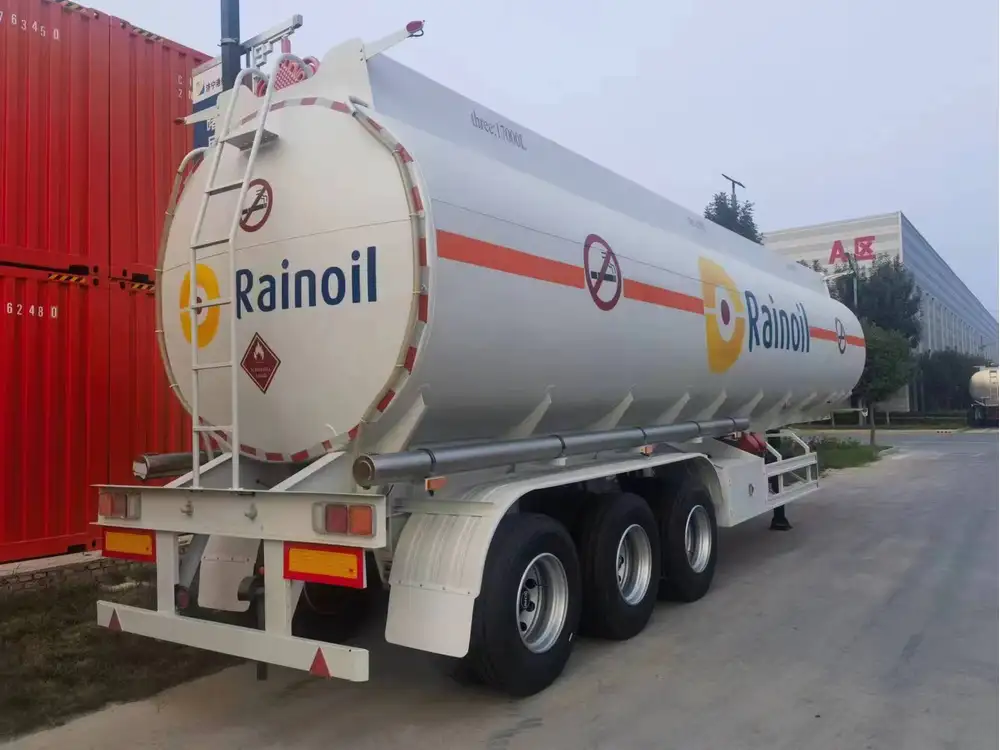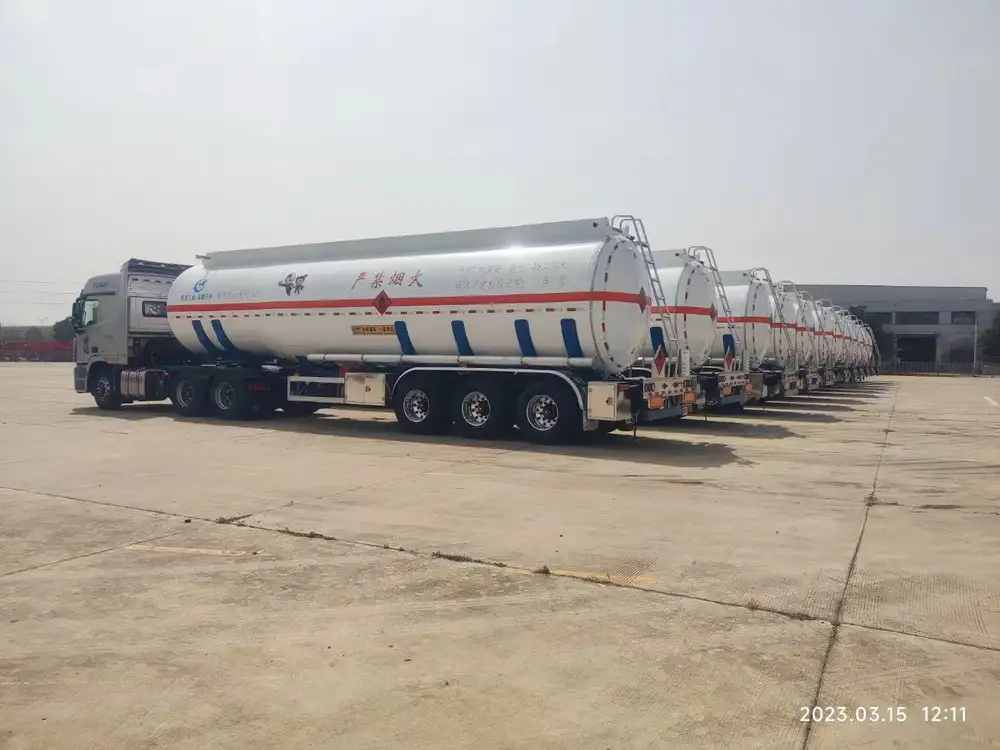Understanding Semi-Trailer Axle Adjustment
Adjusting semi-trailer axles is a critical maintenance task for ensuring optimal performance and safety. Improperly aligned axles can lead to uneven tire wear, reduced fuel efficiency, and compromised handling. Understanding the mechanics behind axle adjustment is paramount for any fleet owner or operator looking to maintain their fleet in prime condition.
What Is Axle Alignment?
Axle alignment involves positioning the axles relative to one another and the trailer frame. This adjustment helps in distributing the weight evenly across all tires, enhancing stability, and prolonging tire life. Misalignment can occur due to various factors, such as heavy loads, rough terrain, or accidents.

Key Components of Semi-Trailer Axle Systems
- Axles: The main components that support the weight of the trailer and transfer loads from the trailer to the wheels.
- Tires: Affected significantly by axle alignment, as improper alignment can cause uneven wear.
- Suspension Systems: Influences the ride quality and stability during transport.
- Brake Systems: Well-aligned axles help the brake system operate efficiently.
Signs of Misalignment
Recognizing the signs of misalignment can save time and money. Here is a list of common indicators:
| Sign of Misalignment | Description |
|---|---|
| Uneven Tire Wear | Tires show significant wear patterns on one side. |
| Vehicle Pulling | The trailer drifts to one side while driving. |
| Reduced Fuel Efficiency | Noticeable drop in fuel efficiency over time. |
| Noise | Unusual noises when in motion can indicate issues. |
| Trailer Sway | Excessive swaying or bouncing while driving. |
Tools Needed for Adjustment
Before embarking on the axle adjustment process, ensure you have all the necessary tools at hand:
- Torque Wrench: For tightening bolts to the manufacturer’s specifications.
- Measuring Tape: To measure distances accurately.
- Alignment Bar or Laser Alignment Tool: Essential for ensuring precise alignment.
- Jack Stands: For safe lifting of the trailer during adjustment.
- Chalk or Marking Tool: For marking alignment measurements.
- Level: To check the height and angles of the trailer.

Step-by-Step Guide to Adjusting Semi-Trailer Axles
Step 1: Prepare the Environment
- Level Surface: Park the semi-trailer on a flat, stable surface to ensure accuracy during adjustment.
- Safety Protocols: Engage the parking brake and use wheel chocks to prevent any movement.
Step 2: Measure Current Alignment
- Place Measuring Tape: Extend the measuring tape from the front axle to the rear axle.
- Record Measurements: Take measurements on both sides to ensure they are equal. Differences indicate misalignment.
- Use an Alignment Tool: If available, use an alignment bar or laser tool to gauge the current angle of the axles.

Step 3: Adjust Axle Position
- Loosen Bolts: Using a torque wrench, carefully loosen the bolts securing the axle to the suspension. Be cautious not to completely remove them.
- Align the Axle:
- Forward/Backward Adjustments: Move the axle forward or backward to achieve the desired distance.
- Side-to-Side Adjustments: Shift the axle sideways as necessary to correct any variance in alignment.
- Re-measure: After adjustments, use the measuring tape and alignment tool again to check if the adjustments have met specifications.
Step 4: Secure the Axles
- Tighten Bolts: Securely tighten the bolts in accordance with the manufacturer’s torque specifications.
- Double-Check Measurements: It’s imperative to measure again after securing to ensure alignment hasn’t shifted.
Step 5: Perform a Test Drive
- Initial Check: After adjustment, a short test drive will reveal any immediate handling issues.
- Observe Behavior: Pay attention to steering response, any pulling sensations, or unusual tire noises during the test.

Step 6: Regular Maintenance Checks
Establish a routine for regular check-ups on axle alignment, particularly after heavy loads or long trips.
Common Questions About Semi-Trailer Axle Adjustment
How often should axle alignment be checked?
- It is advisable to check alignment every few months or after significant alterations to load patterns. More frequent checks should be made if your fleet operates in rough terrains.
What are the consequences of ignoring misalignment?
- Ignoring misalignment can lead to severe tire damage, higher operational costs due to fuel inefficiency, and even safety hazards while on the road.
Can I do it myself, or should I hire a professional?
- If you possess the necessary tools and knowledge, you can perform alignment yourself. However, professional assistance ensures higher accuracy and can help with more complex adjustment issues.
Benefits of Proper Axle Adjustment
Properly adjusted semi-trailer axles can yield numerous benefits:
- Enhanced Tire Longevity: Correct alignment minimizes uneven wear, extending the lifespan of tires.
- Improved Safety: Well-aligned axles ensure better handling, reducing the risk of accidents.
- Increased Fuel Efficiency: A properly aligned trailer minimizes drag and maximizes fuel efficiency, leading to significant savings.
- Reduced Maintenance Costs: By preventing undue wear and tear, the overall maintenance costs decrease.

Comparison Table of Alignment Techniques
| Technique | Description | Pros | Cons |
|---|---|---|---|
| Manual Alignment | Adjusting axles using physical measurements. | Cost-effective, straightforward. | Time-consuming; can be inaccurate. |
| Laser Alignment | Using laser tools for precision alignment. | Highly accurate; quick adjustments. | Expensive equipment needed. |
| Professional Service | Hiring experts for alignment. | Guaranteed accuracy; saves time. | Incurred additional costs. |
Conclusion
Understanding how to adjust semi-trailer axles can save time, money, and improve safety on the road. Keeping axles well-aligned enhances operational efficiency and prolongs the lifetime of both the trailer and its tires. Regular checks and timely adjustments can prevent significant issues over time. By following the detailed steps outlined in this guide, operators can ensure their semi-trailers are in optimal condition, ready to handle the challenges of transportation with confidence.
Investing in regular maintenance, understanding the mechanics of axle alignment, and employing the right tools will keep your fleet operating smoothly and effectively.



